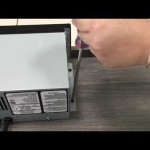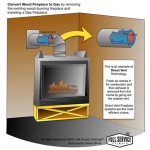Understanding Fireplace Mantel Shelf Dimensions
The fireplace mantel shelf serves as a focal point in many living spaces, blending functionality with aesthetic appeal. Selecting the appropriate dimensions for a mantel shelf requires careful consideration of several factors, including the fireplace opening size, the surrounding room's proportions, architectural style, and personal preferences. This article explores the crucial aspects of fireplace mantel shelf dimensions, providing a comprehensive guide to help homeowners and designers make informed decisions.
The primary purpose of a mantel shelf is to provide a surface for displaying decorative items, such as photographs, artwork, candles, and seasonal decorations. It also contributes to the overall aesthetic of the fireplace, enhancing its visual impact and creating a cohesive design. A well-proportioned mantel shelf can balance the fireplace's presence in the room and complement the surrounding decor. Conversely, an improperly sized mantel can detract from the room's overall harmony and make the fireplace appear disproportionate.
When determining the optimal dimensions for a fireplace mantel shelf, it is important to consider both its length and depth. The length of the mantel typically extends beyond the width of the fireplace opening, while the depth refers to the distance the shelf projects from the wall. The height of the mantel above the firebox is also a critical safety consideration.
Key Point 1: Length and Overhang Considerations
The length of a fireplace mantel shelf is a crucial dimension that significantly affects the overall appearance of the fireplace. Generally, the mantel should extend beyond the width of the firebox or fireplace surround by a minimum of 3 to 6 inches on each side. This overhang creates a visual balance and helps to anchor the fireplace within the room.
The exact amount of overhang depends on several factors, including the size of the fireplace, the proportions of the room, and the desired aesthetic. For smaller fireplaces, a smaller overhang may be sufficient, while larger fireplaces may require a more substantial overhang to maintain visual harmony. Rooms with higher ceilings can also accommodate a larger mantel shelf with a greater overhang without appearing out of proportion.
To determine the ideal mantel length, measure the width of the firebox or fireplace surround. Add the desired overhang on each side, ensuring the total length is visually pleasing and proportionate to the surrounding space. A common guideline is to add 6 to 12 inches to the overall width of the firebox surround. For example, if the firebox surround is 48 inches wide, the mantel length could be between 54 and 60 inches.
Consider the existing architectural details of the room when determining the mantel length. If the room features strong horizontal lines, such as wainscoting or a chair rail, a longer mantel may complement these features. Conversely, if the room is more vertically oriented, a shorter mantel may be more appropriate. Experimenting with different lengths, using painter's tape or cardboard mock-ups, can help visualize the final result before making a permanent decision.
The style of the mantel shelf also influences the optimal length. A simple, minimalist mantel may look best with a shorter overhang, while a more ornate or traditional mantel may benefit from a longer overhang. The design should integrate with the existing design elements of the room.
Key Point 2: Depth and Projection Requirements
The depth of a fireplace mantel shelf determines the amount of surface area available for displaying decorative items. The ideal depth depends on the size and type of items that will be placed on the mantel, as well as the overall style of the fireplace. A deeper mantel shelf provides more display space, but it can also protrude further into the room, potentially affecting traffic flow.
The minimum recommended depth for a fireplace mantel shelf is typically between 6 and 8 inches. This depth provides sufficient space for small decorative items, such as photographs, candles, and small vases. For displaying larger items, such as artwork or larger decorative objects, a depth of 10 to 12 inches or more may be necessary.
Consider the visual impact of the mantel's depth when making a decision. A very shallow mantel may appear insignificant, while an excessively deep mantel can overwhelm the fireplace and create a cluttered look. The depth should be proportionate to the height and length of the mantel, as well as the size of the fireplace and the room itself.
In rooms with limited space, a shallower mantel shelf may be a more practical choice. In this case, prioritize functionality by selecting items that are smaller in scale and can be displayed effectively on a narrower surface. Wall-mounted shelving above the mantel can also provide additional display space without increasing the mantel's depth.
The style of the mantel also influences the appropriate depth. A traditional mantel with intricate carvings or moldings may require a deeper profile to accommodate these details. A contemporary mantel with clean lines may look best with a shallower depth.
Key Point 3: Height Above the Firebox and Safety Standards
The height of the fireplace mantel shelf above the firebox is perhaps the most critical dimension, as it directly impacts safety and functionality. Building codes and safety standards specify minimum clearances between the firebox opening and combustible materials, including the mantel shelf. These clearances are designed to prevent fires and ensure safe operation of the fireplace.
The National Fire Protection Association (NFPA) and local building codes provide specific guidelines for fireplace mantel clearances. As a general rule, the bottom of the mantel shelf should be at least 12 inches above the top of the firebox opening. For every inch the mantel projects out from the wall, the clearance should increase by one inch. This rule of thumb helps to ensure that the mantel is not exposed to excessive heat, reducing the risk of fire.
For example, if a mantel projects 8 inches from the wall, the bottom of the mantel should be at least 20 inches above the firebox opening (12 inches + 8 inches). This calculation is important to implement.
It is essential to consult local building codes and regulations to determine the specific requirements for fireplace mantel clearances in your area. Codes may vary depending on the type of fireplace (e.g., wood-burning, gas, electric) and the materials used in its construction. Failing to comply with these codes can result in safety hazards and potential legal issues.
When installing a mantel shelf, use non-combustible materials, such as stone, brick, or metal, to construct the firebox surround. This can help to reduce the risk of fire and allow for a lower mantel height. If using combustible materials, such as wood, ensure they are properly protected with fire-resistant barriers.
Consider the type of fireplace when determining the mantel height. Gas fireplaces typically produce less heat than wood-burning fireplaces, allowing for a lower mantel height. Electric fireplaces produce minimal heat and can often accommodate a mantel at a lower height, but manufacturers’ instructions should always be followed.
Always follow the manufacturer's instructions for the fireplace insert or appliance. The provided documentation will often include specific guidance on mantel clearances and installation requirements.
The height of the mantel should also be considered in relation to the overall design of the room. A mantel that is too high can feel disconnected from the fireplace, while a mantel that is too low can appear cramped and visually unbalanced. Aim for a height that creates a sense of harmony and proportion within the space.
In summary, fireplace mantel shelf dimensions are critical for both aesthetic appeal and safety. Understanding the importance of length and overhang, depth and projection, and height above the firebox allows for an informed decision-making process when selecting or designing a mantel. Furthermore, consulting local building codes and safety standards is essential to ensure code compliance and prevent fire hazards. By carefully considering these factors, homeowners and designers can create a fireplace that is both beautiful and safe, enhancing the overall ambiance of the living space.

Fireplace Mantel Installation Tips How To Antique Woodworks

Best Fireplace Mantel Proportions How Not To Muck It Up Laurel Home

Nicole Fireplace Mantel Siteworks Mantels

Mantel Dimensions Fireplacepro

Aoibox 48 In W X 9 D Rustic Wood Fireplace Mantel Wall Mounted And Floating Decorative Shelf Light Brown Snsa10in365 The Home Depot

Az Faux Rustic Lightweight Wood Fireplace Mantel Shelf Kit Old English 60 L X 6 W H Unfinished Com

48 Fireplace Mantel Shelf Solid Cedar Wood Wall Mounted Brown Com

Best Fireplace Mantel Proportions How Not To Muck It Up Laurel Home

Modern Farmhouse Fireplace Mantel

Mount Vernon Mantels Measuring Your Fireplace For A Mantel
Related Posts








